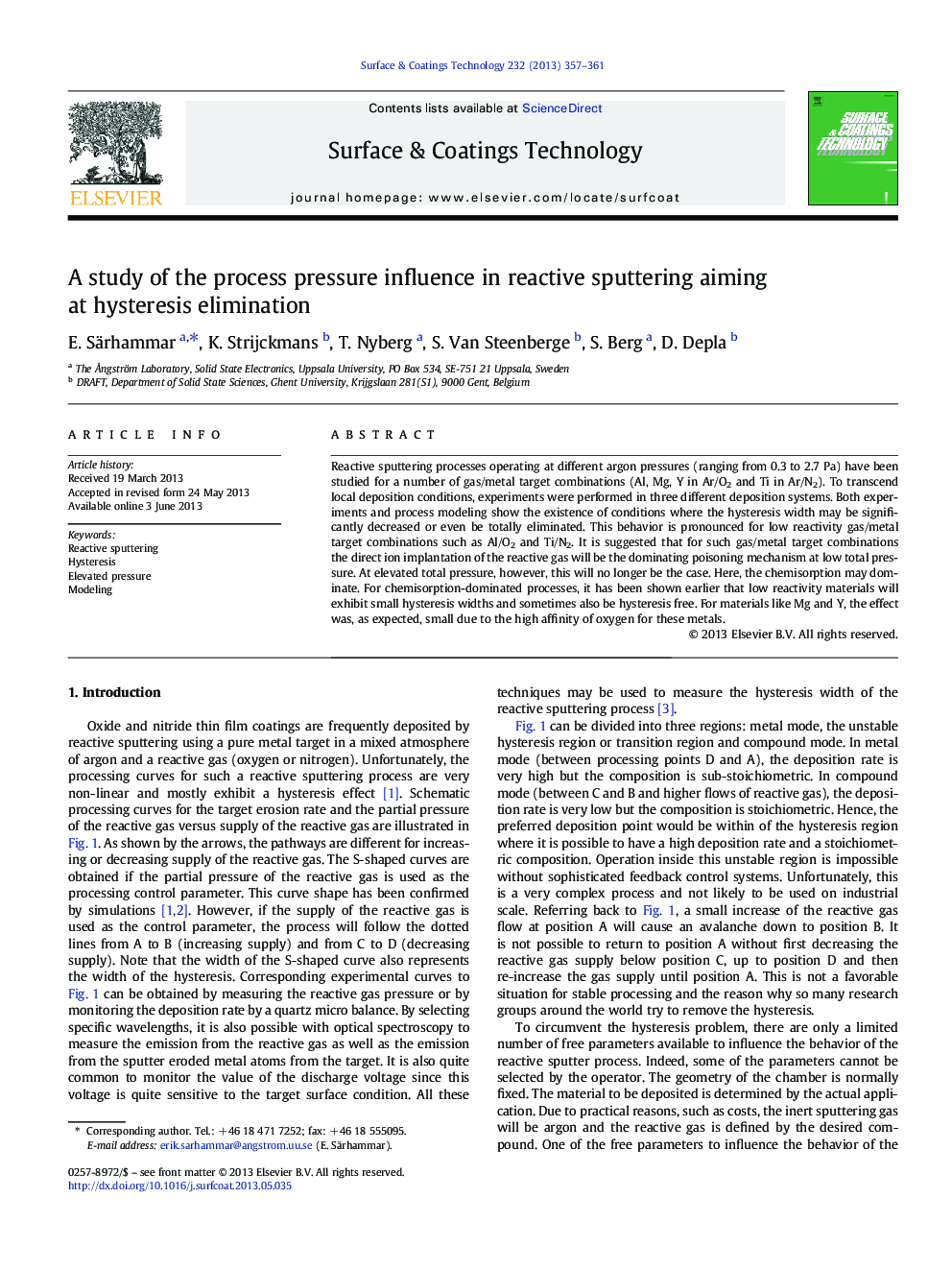| Article ID | Journal | Published Year | Pages | File Type |
|---|---|---|---|---|
| 8029500 | Surface and Coatings Technology | 2013 | 5 Pages |
Abstract
Reactive sputtering processes operating at different argon pressures (ranging from 0.3 to 2.7Â Pa) have been studied for a number of gas/metal target combinations (Al, Mg, Y in Ar/O2 and Ti in Ar/N2). To transcend local deposition conditions, experiments were performed in three different deposition systems. Both experiments and process modeling show the existence of conditions where the hysteresis width may be significantly decreased or even be totally eliminated. This behavior is pronounced for low reactivity gas/metal target combinations such as Al/O2 and Ti/N2. It is suggested that for such gas/metal target combinations the direct ion implantation of the reactive gas will be the dominating poisoning mechanism at low total pressure. At elevated total pressure, however, this will no longer be the case. Here, the chemisorption may dominate. For chemisorption-dominated processes, it has been shown earlier that low reactivity materials will exhibit small hysteresis widths and sometimes also be hysteresis free. For materials like Mg and Y, the effect was, as expected, small due to the high affinity of oxygen for these metals.
Related Topics
Physical Sciences and Engineering
Materials Science
Nanotechnology
Authors
E. Särhammar, K. Strijckmans, T. Nyberg, S. Van Steenberge, S. Berg, D. Depla,
